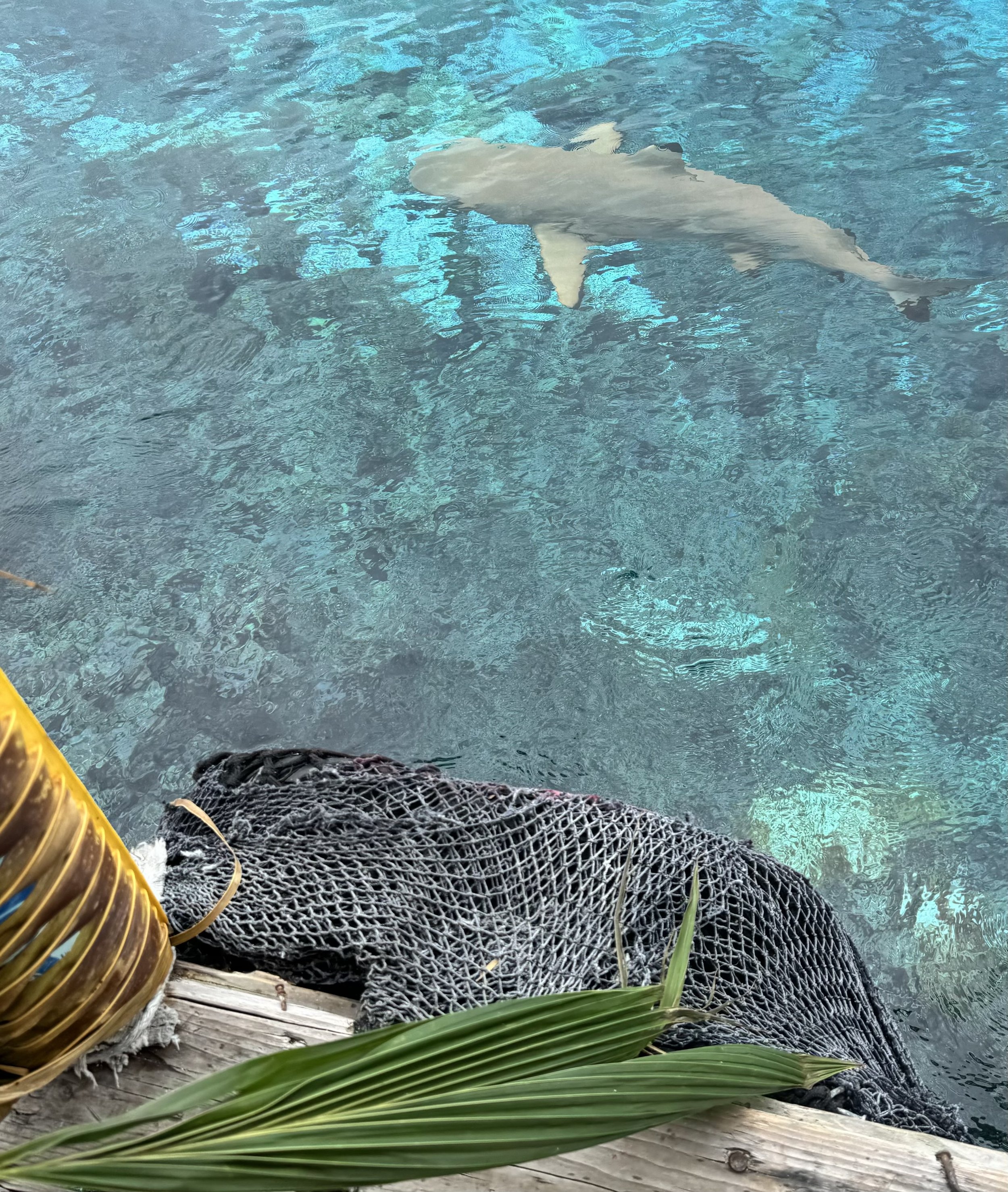Day 29
After leaving Makemo two days ago, everything looked good for a happy passage. I had a wonderful night session on the aft deck, watching the swelling waves and the clouds and the not-quite full moon. The wind was regularly gusting to 30 but still coming from a positive direction.
But at some point, it all went a bit squiffy and the rocking-horse turned into the Urban Cowboy mechanical bull. Well, perhaps I exaggerate. Perhaps it was more like those rusty pony rides on springs outside grocery stores that you feed a quarter to set in motion. Nonetheless, I don’t think anyone, other than the unflappable Jeff managed to get much sleep.
It’s really all a matter of perspective, I suppose. For a noobie voyager like yours truly, the relentless motion is exhausting, constantly using muscles in ways that would make my Pilates guru Jeniene proud. Just imagine a 24-hour Pilates class. After a night of it, I find myself curled up somewhere, unable to do much other than escape into a book or sleep. However, the salty sea dog Jeff skips around the boat, adjusting trims and lines, diving into engine room or cockpit locker, insisting on washing dishes (he is happy to be on jankers as long as Georgie keeps producing her stellar one-pot cabbage meals). But he has been skipping around on boats his entire life; will I be skipping soon if I keep up this on-board life?
Does the term “skipper” come from one’s ability to skip around a boat? David certainly skips around Leona….
Back to yesterday. The rain and 25 knot wind inside Fakarava’s lagoon kept the meerkats inside their catamarans, but our anchoring would have made them green with envy, completed with a minimum of fuss and no shouting. David and Jeff then rigged up the bosun's chair and reattached the roller, successfully scratching that itch to fix something.
The second largest of the Tuamotu atolls, Fakarava’s lagoon belies the name. Not a sweet palm-tree-lined, sky-blue, inland salt-water pond, it resembles one of the Great Lakes. Yet where a Chicago skyscraper might loom, there stretches an underwater wall of the most incredible coral.
So after soup and a sleep, the Wild Thornberrys ventured out into the rain and wind for an underwater safari. The south end of Fakarava features the island of Tetamanu where there is little other than a dive center and lodge. Black tipped reef sharks meander among the handful of dinghies and huts hovering over the water, and a living coral bed glows with brilliant colors in contrast to the sand and dead white coral beach next to it.
Jean the boat driver/leader and Martin our guide checked credentials, fit gear, and outlined the dive plan for the three Wild Thornberrys. Adrian from Switzerland and Angel from Spain completed our international posse, and off we went into the Pass. Or under it, rather.
But that first bite of current swept us all into a moment of confusion as we adjusted breathing, sight, and movement to this new gravity-less environment. Martin calmly encouraged us to slow down, stay behind him, be cool…and so we did. Angel and Adrian got busy with their underwater cameras, while the Thornberrys just gaped and grinned at the beauty of it all.
Rain, wind, and language barriers disappeared, replaced by hand signals, weightlessness, and a coral garden that rivals Versailles. Like the courtiers showing off their finery, giant grouper, eels, angel fish, parrot fish, a lion fish (a healthy part of this particular ecosystem), sea cucumbers, and hundreds of other fish I cannot begin to identify flashed their scaly plumages, grazing on the coral, hiding in the coral, darting among the coral. Well, not the sea cucumbers; they just lay luxuriantly along the sea bed.
And then there were….dun dun dun dun dun dun….the sharks. Although we did not visit the famous wall of sharks where one regularly sees, I kid you not, hundreds of sharks, we swam among a mere 30 or so. Sleek, silver torpedos gliding just outside the playground, they weren’t aggressive, but definitely emanated apex predator energy.
Clearly Fakarava earned its UNESCO biosphere designation and works hard to maintain it. Posters everywhere remind you of the Do’s and Don’t’s of life on a coral reef. There are only certain areas you can park a dinghy, only certain places to dive, reminders not to touch living coral. I am more than happy to follow all the rules.
That one hour exploration wiped out the memories of the 18 previous hours.
It’s all a matter of perception, after all.





